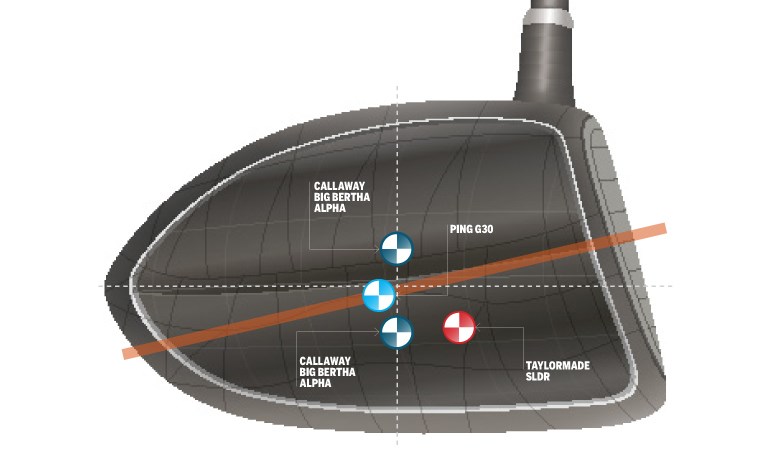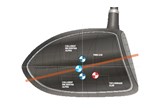How does centre of gravity help my drives?
Published:
The phrase ‘centre of gravity’ is bandied about all the time in golf, and it has a fundamental effect on the backspin, sidespin, forgiveness and ball speed on your tee shots. So it’s worth knowing a little about centre of gravity location in drivers and how you can fine-tune yours to maximise distance.
2014 is the year of CG in drivers. TaylorMade has seen significant distance gains with its low and forward CG in its new SLDR; Callaway launched its Big Bertha Alpha, the first driver with an adjustable centre of gravity; and PING was the longest driver in TG’s 2014 test with a low and back CG.
“The centre of gravity of any object is the one small point that represents the intersection of all the possible balance points of that object,” clubhead design guru Tom Wishon told TG. “Every clubhead has a vertical CG location (how high up in the head the CG is from the sole) and a horizontal CG location (how far away it is from the centre of the hosel) while it’s also defined by how far back from the clubface it is located.” So which is best for you? We’ll let three of the biggest manufacturers give you their side of the story…
THE PING VIEW
Marty Jertson, Director of Product Development, said: “A very low and deep CG is the best place for distance, forgiveness, and accuracy. When the CG is pulled away from the clubface, the moment of inertia goes up significantly – which is the key property that reduces the gear effect on off-centre hits (the action of the clubhead that causes a shot to curve). With less gear effect, you transfer more energy to the ball, so you get more distance, and the clubface twists less at impact, so you hit more fairways. You don’t have to play as much loft so you get more ball speed because the impact loft angle and attack angle are more in line with each other – adding more distance.”
THE TAYLORMADE VIEW
Benoit Vincent, Chief Technical Officer, said: “A forward and low CG is the holy grail for creating maximum ball velocity and optimising launch conditions. Low and forward CG in a driver delivers more distance over a low and back CG because it makes the ball spin less and launch higher. The SLDR driver generates 400rpm less than a conventional driver. Golfers spinning the ball a lot will increase distance with less spin and the same launch. Other golfers will increase their distance further by lofting-up; by adding loft, they increase launch angle and increase forgiveness, while keeping the spin reasonably low.”
THE CALLAWAY VIEW
Dr Alan Hocknell, Head of R&D, said: “Better golfers with higher head speeds that strike the centre of the face more often tend to produce too much backspin – so lowering the CG will create more total distance. But for the majority of golfers who strike the ball on a variety of points across the face, especially biased towards the upper portion of the face, a low CG might not be the best configuration. A higher CG produces the better combination of ball speed, spin and launch angle and longer overall distance. The Big Bertha Alpha offers variable vertical CG, to tune to your needs and many will see an increase in distance by raising the CG.”
The TG verdict
Joel Tadman, Equipment Editor, said: “In researching this article, talking to some of the brightest minds in golf, we came to realise that CG location is a minefield. The only way to find out which CG location works best with your swing is to get fitted. Hit different clubs with a pro on a launch monitor and you’ll discover which delivers the best distance, accuracy and launch conditions for you.”

